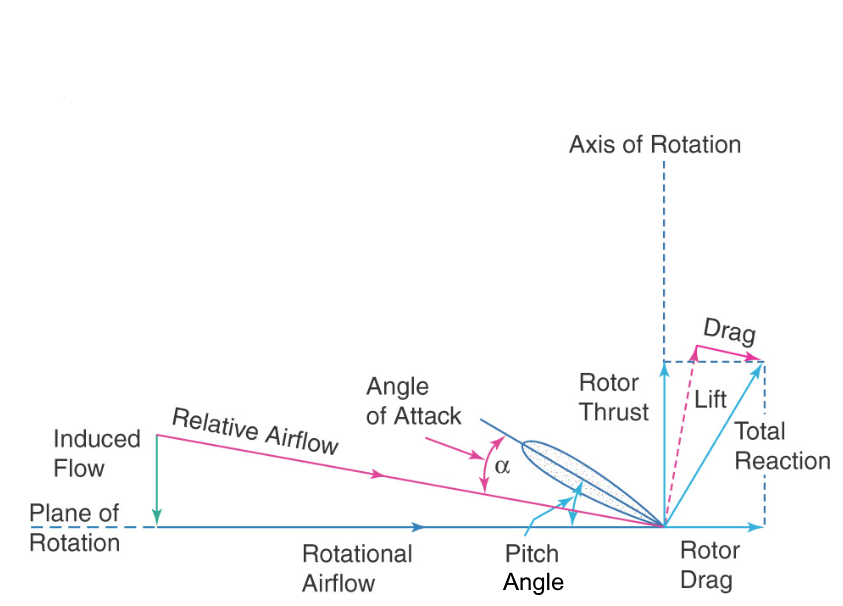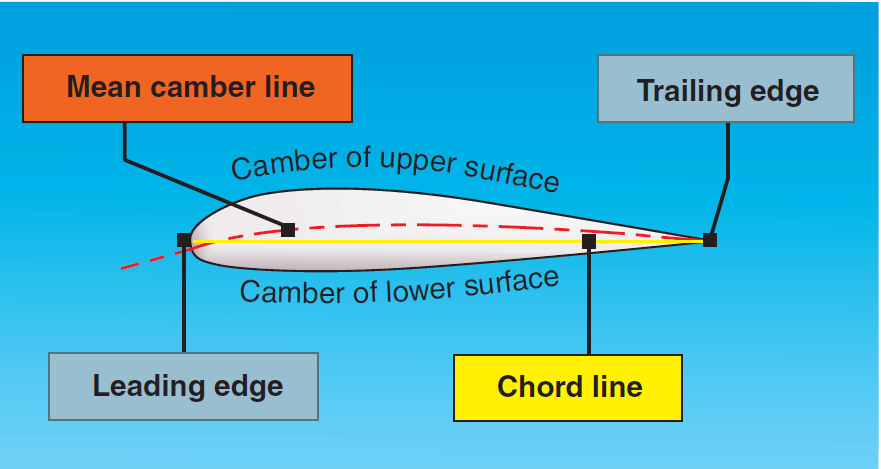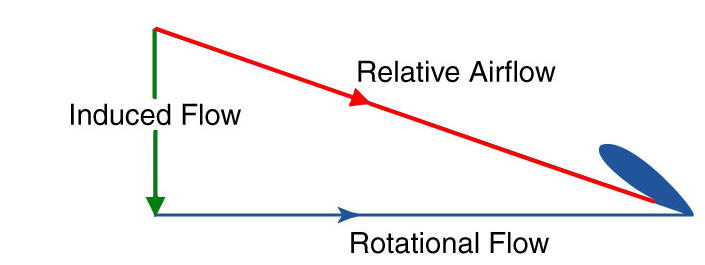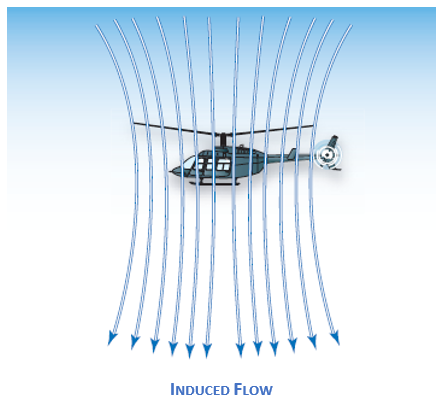¶ Introduction
Airfoils (or Aerofoil) are common for helicopters and airplanes. The difference is that for helicopters the airfoils are the rotor blades attached to the main rotor and the main rotor rotates about an axis. This is not the case for airplanes where the airfoils (the wings) are fixed.
The fact that the main rotor rotates about an axis of rotation changes several aerodynamic aspects compared to the airfoils of an airplane
See the scheme of basic aerodynamic forces acting on an airfoil below:

It is important to have some definitions about airfoil terminology to better understand the forces acting on it

- Leading edge: The front edge of an airfoil
- Trailing edge: The rearmost edge of an airfoil
- Chord: The length of the chord line from leading edge to trailing edge
- Chord line: A straight line intersecting leading and trailing edges of the airfoil
- Mean camber line: A line drawn halfway between the upper and lower surfaces of the airfoil
¶ Relative Airflow
Relative Airflow is an airflow relative to an airfoil. The Movement of an airfoil through the air creates relative airflow
The relative Airflow has two components:
- Horizontal part caused by the blades turning and movement of the helicopter through the air
→ The Rotational airflow
- Vertical part caused by the air being forced down through the rotor blades
→ The Induced Flow

¶ Induced Flow (or ''Downwash '')
When blade pitch angle is increased, a downward flow of air is induced through the rotor blades creating a downward component of air that is added to the rotational relative wind
Induced Flow is defined as the mass of air that is forced down by the rotor action

Rotor blade action changes the still air to a column of descending air. Therefore, each blade has a decreased Angle of Attack (see below) due to the downwash.
¶ Angle of attack (AOA)

The angle of attack (AOA) is the angle between the airfoil chord line and the relative airflow. It is an aerodynamic angle and it can change without change to the blade pitch angle
The angle of attack (AOA) is an aerodynamic angle, not easy to measure. Several factors may change the rotor blade AOA and the pilot has little direct control over the AOA, except indirectly through the flight control input. An other thing important to know:
The AOA and the induced flow are inversely proportional for a given blade section and rotor rpm
- When the AOA increases, the Induced Flow decreases and more lift is produced
- When AOA decreases, the Induced Flow Increases and more power is required to lift
¶ Blade Angle (or pitch angle)
The blade angle (or pitch angle) is the angle between the chord line of a main or tail rotor blade and the rotor hub
It is a technical angle rather than an aerodynamic angle.
The pilot can directly vary the blade angle with flight instruments (this is not the case with the angle of attack). When the pilot changes the blade angle he also indirectly changes the angle of attack
- The helicopter pilot's manual, Volume 1, 2nd Edition
- FAA helicopter flying handbook
- Principles of helicopter flight, 2nd Edition
- VID 514786 - Creation
- VID 496402 - Wiki.js integration